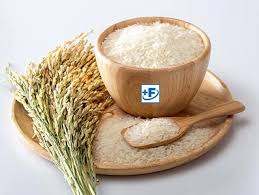Bags of rice stocked wall-thick at the grain warehouses are what the nutrition warriors in Bihar are counting on to repel the onslaught of anaemia, which as recent figures indicate has gained the upper hand in recent times.
A ‘workshop’ for media, organised last week in Patna, as part of an SBCC Campaign, revealed that according to the National Family Health Survey, 5th round (NFHS-5), with 57% of all women in reproductive age group, (an increase of 4.1 percentage points over NFHS-4) and 67.1% of all young children (an increase of 8.5 percentage points over NFHS-4) and a quarter of all men suffering from anaemia (an increase of 2.3 percentage points over NFHS-4), the goal of health for all is a tough nut to crack, if you get my drift.
By the way, SBCC translates as ‘Social behaviour change communication’.
The World Food Programme (WFP), the Government of Bihar in tandem with Government of India agencies have been trying to get the rural population and the beneficiaries of the Public Distribution System to adapt to buying and eating ‘fortified’ rice.
In the global fight against malnutrition and nutrient deficiencies, fortified rice has emerged as an acceptable tool in improving the health and well-being of nourishment challenged populations. Fortified rice is enriched with essential vitamins and minerals, addressing deficiencies that are prevalent, particularly in the low and middle-income segments. As we know, Bihar has a huge swathe of population that is both economically challenged, socially disadvantaged , and malnutrition prone.
“In fact, over the past decade, anaemia has increased in Bihar, and inadequate food intake is one over-riding factor,” said the General Manager of Bihar State Food and Civil Supplies Corporation Amresh Kumar Amar, quoting NFHS figures in a presentation at the workshop. He also said that for many families, diversification of diet is expensive.
So, the Fortified Rice Campaign is an easy fix. Simple, isn’t it? Just convince the natives that fortified rice is a significant source of essential nutrients such as iron, vitamin A, folic acid, and zinc. Explain that these nutrients are crucial for various bodily functions, including immune system support, cognitive development, and overall growth. Point out that their daily food may lack adequate levels of these micronutrients, and that fortified rice serves as an effective means of supplementation.
It’s not that simple.
The fortified rice campaign has met with suspicion and resistance from several quarters. Misleading messaging born of ignorance, unverified conspiracy theories, and fear are a major roadblock, says Sayed Haque, one of the communication partners in the WFP Bihar campaign.
Sorry Harry Potter, No Magic Wand!
Government funded communication may give the impression that it was Narendra Modi who ‘kicked off’ the fortified rice program from the ramparts of the Red fort in 2021.
What Modi actually did was announce the ‘scale up’ of the slog-work done by the United Progressive Alliance government, 12 years earlier!
Since early 2000, thirteen efficacy trials have been published that assessed the impact of fortified rice on micronutrient status. Each study was conducted in a controlled environment. The studies were conducted in countries such as the Philippines, India, Nepal, Thailand, Mexico and Brazil. Study populations included children aged 6-23 months, preschool and school children, women of reproductive age and anaemic individuals. More on this later.
You can’t materialize a massive social behaviour change with a flick of your ‘magic wand’.
WFP and Bihar’s Rice Fortification Program
The WFP intervention on the rice fortification programme in Bihar, included technical assistance to the Department of Food and Consumer Protection, which is responsible for the roll out of the programme; field monitoring visits to identify bottlenecks in the rice fortification programme; capacity building of rice mill owners and personnel as well as officials of allied government departments; advocacy with senior government officials, and a social and behaviour change campaign to improve awareness around fortified rice.
Data supplied by the WFP shows that till the beginning of February this year, some 850 government officers and 595 rice mill personnel received training. The SBCC campaign claims that 2.61 lakh people have been reached through community engagement and advocacy activities, and some 15.7 million through Mass media activities.
Currently, there are 795 approved rice mills engaged in the fortification and rolling out process. Six Fortified Rice Kernel[FRK] manufacturers have been empanelled, four from Bihar, One from Jalpaiguri in West Bengal, and one from Sirsa in Haryana. These factories prepare the nutrition enriched kernels that are shipped to the rice mills. The rice mills blend the kernels with the milled rice. 1 gram of kernels is mixed with 100 grams of rice.
As much as some folks like to put spin on things, the hard fact is that all the [politically hazardous] ground testing and spade work began two decades ago.
The context of ‘Rice Fortification’
Since early 2000, studies have compared the impact on micronutrient status among persons who received fortified rice (and no other supplements), versus those who received non-fortified rice and micronutrients in supplements instead.
The Lancet series on “Maternal and Child Undernutrition” in 2008, includes fortification of foods with micronutrients among the key interventions with a history of demonstrated impact in reducing VMD, undernutrition, death, and disease.
The World Food programme piloted fortified rice implementation in districts of Odisha, Uttar Pradesh and Kerala in 2011.
A report in the Food and Nutrition Bulletin [no.33, United Nations University. 2011], notes that in India, multiple programs to fortify rice delivered through the Government of India’s Mid-Day Meal program have been implemented since 2008, reaching nearly 200,000 beneficiaries.”
In 2008, India and Indonesia were seriously considering the introduction of fortified rice through their PDS (Public Distribution systems). The United States had been fortifying rice since the 1970s, with a nonuniform requirement for rice fortification; in 2011, rice fortification was mandatory in six states in the United States.
At the World Bank–International Monetary Fund spring meetings held in April 2011 before the G20 meetings, the head of the World Bank urged the adoption of rice fortification as a means to improve nutrition for millions of people facing hunger.
In 2000, the Philippines mandated the fortification of rice with iron. Most of the fortified rice is handled by the National Food Authority. In Costa Rica, mandatory regulations on rice fortification were issued in 2001. All rice in Papua New Guinea has been required by law to be fortified since 2007. In 2009, Panama passed a food bill that requires all rice to be fortified
In 2009, Nicaragua issued a Ministerial Resolution placing responsibility on the rice producers and traders to make sure that rice was fortified.
Political Will
In 2012, WFP collaborated with the Department of School and Mass Education, Government of Odisha to distribute fortified rice for Mid Day Meals (MDM) across 1,449 government schools in the district. The pilot aimed to support the fortification of 5,352 metric tons of rice over a period of three years under the MDM programme in Gajapati, Odisha. The overall goal of the project was to operationalise fortification of rice through the MDM platform.
The WFP & Government of Odisha report ‘A Case for Fortified Rice‘ states: The most striking outcome of the Gajapati rice fortification project through the school Mid Day Meal (MDM) scheme was a significant reduction in anaemia. The improvement was as much as 20 percentage points in Gajapati compared with 14 percentage points in the neighbouring Rayagada district where the fortified rice was not supplied. This showed a clear 6 percentage point reduction that can be attributed to the consumption of fortified rice with a high degree of certainty.
From 2021, the Narendra Modi government has demonstrated the political will to ensure the that the targeted populations in all the districts in India have access to fortified rice. The major rice brands in the private sector have also introduced fortified varieties of their products.
India is fast developing the potential to export fortified rice to other nations as well.
For those people of a certain age who must take vitamin pills or supplements daily, fortified rice (or flour) can be very beneficial. It cuts down on the cost and bother of popping pills every day.
Even so, one must not get carried away. There is a concern that blind consumption of fortified staples may lead to the overconsumption of certain vitamins and minerals, posing potential health risks to some people.
The real answer to malnutrition is a plate of healthy food. A healthy food plate should include dark green vegetables, whole grains, beans and lentils, and fruit.
The dark reality is that what with global warming, pollution, and diminishing bio- and plant diversity on one side, and with growing populations on the other; the cost of natural, organically grown food is escalating.
That’s why food fortification is the new mantra and we will be chanting it for decades to come.
FRANK KRISHNER is a social activist, media trainer and journalist. THE OPINIONS EXPRESSED IN THIS PIECE ARE THOSE OF THE AUTHOR AND DO NOT NECESSARILY REFLECT THE EDITORIAL POLICY OF NEWSNET ONE.




